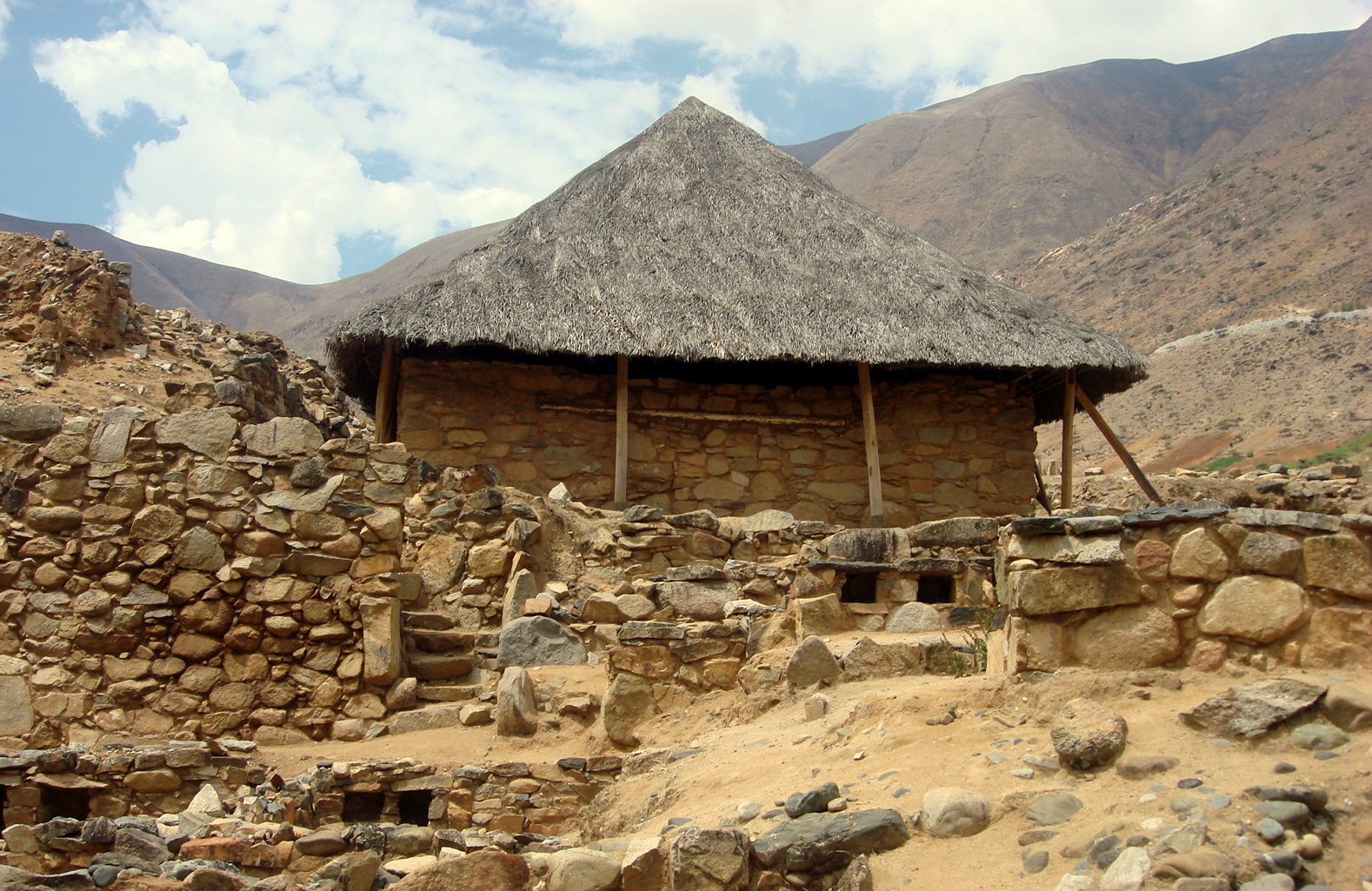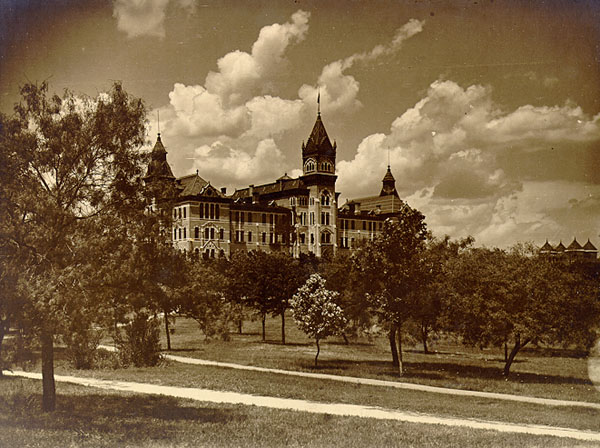|
Kotosh Religious Tradition
The Kotosh Religious Tradition is a term used by archaeologists to refer to the ritual buildings that were constructed in the mountain drainages of the Peruvian Andes between circa 3000 and c. 1800 BCE, during the Andean preceramic, or Late Archaic period of Andean history. Moseley 2001. p. 109. Archaeologists have identified and excavated a number of these ritual centers; the first of these to be discovered was that at Kotosh, although since then further examples have been found at Shillacoto, Wairajirca, Huaricoto, La Galgada, Piruru, among others. These sites are all located in highland zones that are lower than the Puna, and yet there are considerable distances separating them. In spite of this, all these cases of highland preceramic public architecture are remarkably similar. Kotosh tradition shows numerous links with the Chavín culture that emerged at most of these sites subsequently. Archaeological context Three cultural phases which preceded the Chavín culture wer ... [...More Info...] [...Related Items...] OR: [Wikipedia] [Google] [Baidu] |
Department Of Huánuco
Huánuco () is a Political division of Peru, department and region in central Peru. It is bordered by the La Libertad Region, La Libertad, San Martín Region, San Martín, Loreto Region, Loreto and Ucayali Region, Ucayali regions in the north, the Ucayali Region in the east, the Pasco Region in the south and the Lima Region, Lima and Ancash Region, Ancash regions in the west. Its capital is the city Huánuco. Huánuco has a rough topography comprising parts of the Sierra (Peru), Sierra and the High Jungle (mountain rim) regions. Being equidistant from the north and the south of the country, it has the privilege of having a mild weather with an average annual temperature of 20 °C (68 °F). This region is important for its geographical location, history, and for the richness of its land, where the presence of man goes back to ancient times. ''El Hombre de Lauricocha'' (Man of Lauricocha Culture, Lauricocha) is among the most distinctive examples, dating from 10,000 BC, ... [...More Info...] [...Related Items...] OR: [Wikipedia] [Google] [Baidu] |
Huánuco
Huánuco (; ) is a city in central Peru. It had a population of 196,627 as of 2017 and in 2015 it had a population of 175,068. It is the capital of the Huánuco Region and the Huánuco District. It is the seat of the diocese of Huánuco. The metropolitan city of Huanuco is 170,000 hab (2011, urban pop, INEI). It has three districts, Huanuco (head), Amarilis, and Pillco Marca. In this city, the Higueras river meets the Huallaga river, one of the largest rivers in the country. History The city of Huánuco was founded by Spain, Spanish conquistador Gómez de Alvarado in 1539, in the Inca town of the Felipe Guaman Poma de Ayala#Biography, Yarowilca clan, Huánuco Pampa, Wanako. In 1541, the city was moved to its current location in the Pillco Valley. The indigenous chronicler Juan de Santa Cruz Pachacuti Yamqui Salcamaygua notes that during the Inca Empire, Pillco was a significant source of Aclla nuns for the capital city of Cusco, stating, "...there were maidens from all nati ... [...More Info...] [...Related Items...] OR: [Wikipedia] [Google] [Baidu] |
University Of Texas At Austin
The University of Texas at Austin (UT Austin, UT, or Texas) is a public university, public research university in Austin, Texas, United States. Founded in 1883, it is the flagship institution of the University of Texas System. With 53,082 students as of fall 2023, it is also the largest institution in the system. The university is a major center for academic research, with research expenditures totaling $1.06 billion for the 2023 fiscal year. It joined the Association of American Universities in 1929. The university houses seven museums and seventeen libraries, including the Lyndon Baines Johnson Library and Museum, Lyndon B. Johnson Presidential Library and the Blanton Museum of Art, and operates various auxiliary research facilities, such as the J. J. Pickle Research Campus and McDonald Observatory. UT Austin's athletics constitute the Texas Longhorns. The Longhorns have won four NCAA Division I National Football Championships, six NCAA Division I National Baseball Champions ... [...More Info...] [...Related Items...] OR: [Wikipedia] [Google] [Baidu] |
Santa River
The Santa River () is a river in the South American Andes mountain range in the Ancash Region of northwest central Peru. River course Lake Conococha, at an altitude of 4,050 m above sea level and at , is considered the headwaters of the Santa River. Lake Conococha itself is fed by small streams from the Cordillera Negra in the west and the snowcapped Cordillera Blanca in the east. The main tributary of the lake is Tuco River which has its source at Lake Tuco () about 5,000 m above sea level at one of the glacier tongues of mount Tuco. The Santa River emerges from Lake Conococha and runs for 200 km in a northerly direction between the Cordillera Negra in the west and the Cordillera Blanca in the east, forming the fertile Callejón de Huaylas. At 2000 m above sea level, the river changes its course to a westerly direction, squeezing through the narrow gorge of Cañon del Pato ("duck's canyon") before it finally breaks through the coastal ridges. During the dry season from ... [...More Info...] [...Related Items...] OR: [Wikipedia] [Google] [Baidu] |
Tablachaca River
The Tablachaca River is located in Pallasca Province in the Republic of Peru Peru, officially the Republic of Peru, is a country in western South America. It is bordered in the north by Ecuador and Colombia, in the east by Brazil, in the southeast by Bolivia, in the south by Chile, and in the south and west by the Pac .... The lower part of the river used to be known as Chuquicara, meaning "river which reveals precious metals". Grieder et al 1988. p. 5. Its source is in the Pelagatos Range at an altitude of 4,950m, and runs for a little over 80 km. The archaeological site of La Galgada is located on the eastern bank of the Tablachaca. Grieder et al 1988. p. 1. References Footnotes Bibliography * {{coord missing, Peru Rivers of Peru Rivers of the Department of Ancash ... [...More Info...] [...Related Items...] OR: [Wikipedia] [Google] [Baidu] |
University Of Tokyo
The University of Tokyo (, abbreviated as in Japanese and UTokyo in English) is a public research university in Bunkyō, Tokyo, Japan. Founded in 1877 as the nation's first modern university by the merger of several pre-westernisation era institutions, its direct precursors include the '' Tenmongata'', founded in 1684, and the Shōheizaka Institute. Although established under its current name, the university was renamed in 1886 and was further retitled to distinguish it from other Imperial Universities established later. It served under this name until the official dissolution of the Empire of Japan in 1947, when it reverted to its original name. Today, the university consists of 10 faculties, 15 graduate schools, and 11 affiliated research institutes. As of 2023, it has a total of 13,974 undergraduate students and 14,258 graduate students. The majority of the university's educational and research facilities are concentrated within its three main Tokyo campuses: Hongō, ... [...More Info...] [...Related Items...] OR: [Wikipedia] [Google] [Baidu] |
San Cristóbal Of Huamanga University
The National University of San Cristóbal de Huamanga () is a public university located in the city of Ayacucho (formerly known as Huamanga) in southern Peru. History The university was established in 1677 by Cristóbal de Castilla y Zamora, the Catholic archbishop of La Plata o Charcas. Until it was closed in the mid-19th century, it operated mostly as a seminary for the training of Catholic priests. The government of Perú reopened it in 1959 as a national university. In the 1960s, the university became a breeding ground for communist organizations, including the Shining Path. This group, led by philosophy professor Abimael Guzmán, started there before growing into a violent guerrilla movement that conducted a bloody campaign against the government of Perú and against rival leftists groups. (See also Efraín Morote Best.) The rector of the university is Homero Ango Aguilar, a biologist. See also * List of colonial universities in Latin America The list of universiti ... [...More Info...] [...Related Items...] OR: [Wikipedia] [Google] [Baidu] |
Museo Nacional De Arqueología, Antropología E Historia Del Perú
The National Museum of Archaeology, Anthropology, and History of Peru (, MNAAHP) is the largest and oldest museum in Peru, housed at the Palacio de la Magdalena, located in the of Pueblo Libre, a district of Lima, Peru. The museum houses more than 100,000 artifacts spanning the entire history of human occupation in what is now Peru. Highlights include the Raimondi Stele and an impressive scale model of the Incan citadel, Machu Picchu. , the museum is under restoration and very few rooms are open for visitors. History The National Museum of Peru () was founded under the patronage of José de San Martín in 1822 by José Bernardo de Tagle, Bernardo de Monteagudo and Mariano Eduardo de Rivero y Ustariz, who assumed the task of directing the project in 1826. Without a fixed location, The collection settled in various places until 1872, when it was exhibited in the main palace of the International Exhibition. The first collection was made based on original archaeological excava ... [...More Info...] [...Related Items...] OR: [Wikipedia] [Google] [Baidu] |
Field Museum Of Natural History
The Field Museum of Natural History (FMNH), also known as The Field Museum, is a natural history museum in Chicago, Illinois, and is one of the largest such museums in the world. The museum is popular for the size and quality of its educational and scientific programs, and its extensive scientific sample (material), specimen and Cultural artifact, artifact collections. The permanent exhibitions, which attract up to 2 million visitors annually, include fossils, current cultures from around the world, and interactive programming demonstrating today's urgent conservation (ethic), conservation needs. The museum is named in honor of its first major Benefactor (law), benefactor, Marshall Field, the Department store, department-store magnate. The museum and its collections originated from the 1893 World's Columbian Exposition and the artifacts displayed at the fair. The museum maintains a temporary exhibition program of traveling shows as well as in-house produced topical exhibitions. ... [...More Info...] [...Related Items...] OR: [Wikipedia] [Google] [Baidu] |
Julio C
Julio is the Spanish equivalent of the month July and may refer to: *Julio (given name) * Julio (surname) * Júlio de Castilhos, a municipality of the western part of the state of Rio Grande do Sul, Brazil * ''Julio'' (album), a 1983 compilation album by Julio Iglesias *Julio, a character in '' Romiette and Julio'' by Sharon M. Draper Other * Don Julio, a brand of tequila produced in Mexico * Hurricane Julio, a list of storms named Julio * Jules Jules is the French form of the Latin "Julius" (e.g. Jules César, the French name for Julius Caesar). In the anglosphere, it is also used for females although it is still a predominantly masculine name.One of the few notable examples of a femal ... * ''Julie-O'', musical work for solo cello by Mark Summer * Julio 204 or JULIO 204, one of the first graffiti writers in New York City * Julio-Claudian dynasty, the first five Roman Emperors: Augustus, Tiberius, Caligula (also known as Gaius), Claudius, and Nero * Julius (other)< ... [...More Info...] [...Related Items...] OR: [Wikipedia] [Google] [Baidu] |




